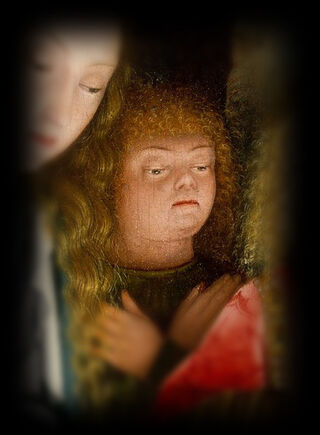Race and Ethnicity
The Offensive Past of the Term Used for Down Syndrome
How did Down syndrome get its name?
Posted September 30, 2021 Reviewed by Vanessa Lancaster
Key points
- Down syndrome is a genetic condition caused by an extra chromosome, and it is the most common chromosomal anomaly in humans.
- The original name was offensive because it mischaracterized the condition.
- As a society, we're becoming more conscious about offensive names and labels.

Some disability-related names have dropped out of usage because they are now considered offensive due to their origins. Down syndrome (Trisomy 21) is just one example.
The History and Naming of Down Syndrome
Down syndrome is a genetic condition caused by an extra chromosome, and it is the most common chromosomal anomaly in humans. The condition was originally called “Mongolism.” This term dates back to the 1860s when British doctor John Langdon Down first described the disorder.
In 1866, Down published the academic paper, “Observations on an ethnic classification of idiots,” claiming that it was possible to categorize different types of conditions by ethnic classifications. He thought that people with this disorder shared facial features with people of Mongolian ethnicity, “ethnicity,” so he named it “Mongolism.” Down further believed that this condition was a reversion to an inferior race “race.” The term soon became offensive because it was racially charged, implying that Mongolian people were inferior.
The original name was also offensive because it mischaracterized the condition. But in 1959, French geneticist Jerome Lejeune discovered its genetic cause, which is an extra copy of Chromosome 21. In 1961, Lejeune and other international experts and Down’s grandson Norman petitioned the medical community to find a new name because Mongolism was a misnomer.
In 1965, the World Health Organization finally withdrew the name after a request by a delegation from the Mongolian People’s Republic who wanted to reclaim the name of their native people. The condition was re-named Down syndrome, after John Langdon Down, while “Trisomy 21” is also used. (“Down’s Syndrome” is still used in the UK.) When the name was changed to a more clinical and, therefore, accurate name, it helped to increase the public’s understanding of the medical condition and encourage empathy for people born with the condition.
Depictions of Down Syndrome in Art
During the 1960s, some believed Down syndrome was a relatively new condition. Supporting this “modern theory,” they noted that people with the condition were not portrayed in ancient art. In response, others observed historical paintings that appear to depict Down syndrome subjects and proposed that the condition existed throughout human history. For example, the Nativity scene in the Flemish painting The Adoration of the Christ Child (Circa 1515, by a follower of Jan Joest) may be an early depiction of Down syndrome in Western art.1
An angel and shepherd shown in the painting have facial features suggestive of Down syndrome. A few years ago, the earliest confirmed case of Down syndrome was found: the skeleton of a child who died in Medieval France.2 The way the child was buried, just like any other person buried during this time, suggests that Down syndrome was not necessarily stigmatized during the Middle Ages.
Outdated and Offensive
Today, it is perceived as misleading and offensive to use “Mongoloid” to refer to people with this condition, although not everyone is aware of this.
In November 2017, nutritionist Libby Weaver issued an apology and recalled 20,000 copies of her book What Am I Supposed To Eat? following complaints of her use of “Mongolism” to refer to Down syndrome. Mongoloid, Mongol, mong, and mongy are still used as insults toward people with intellectual disabilities and in general terms of abuse.
In October 2011, English comedian Ricky came under fire when he shared the joke, “Two mongs don’t make a right,” on Twitter. He refused to apologize and even added a sketch about “mongs” to his comedy routine. Eventually, after much public pressure, he backed down. He apologized, admitting that he had offended people by using the term and did not realize that it was still used as a derogatory term for people with Down syndrome and other disabilities or impdisability.
When high profile people such as Gervais wield the former diagnosis as an insult, it can have the effect of popularizing the term as a slur, further stigmatizing and marginalizing the people involved.
Today, the World Health Organization is careful to ensure that places and people are not stigmatized when naming new diseases and conditions.
Read about this topic and more in Karen Stollznow’s new book, On the Offensive: Prejudice in Language Past and Present.




